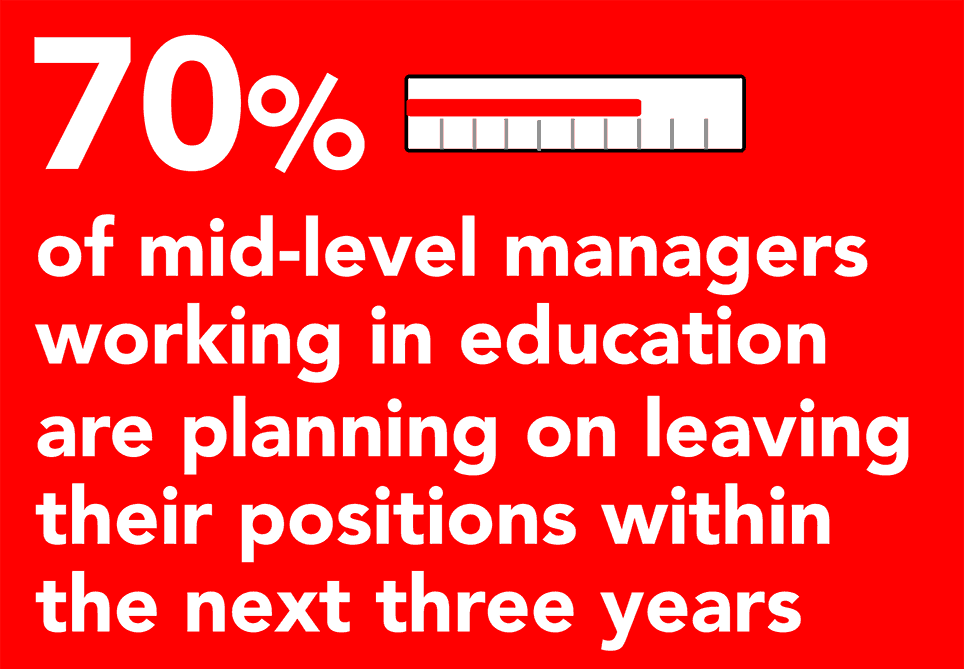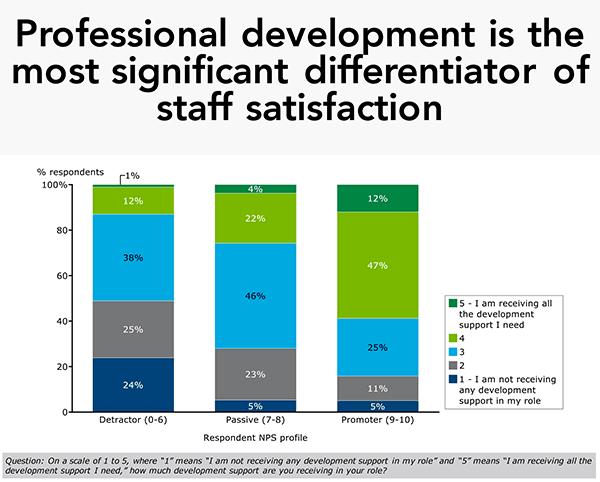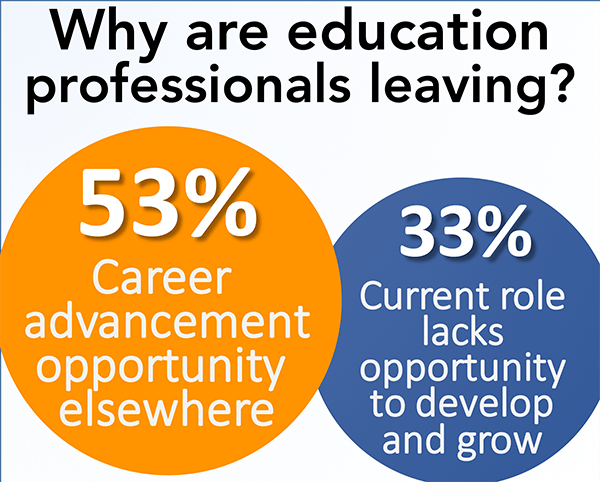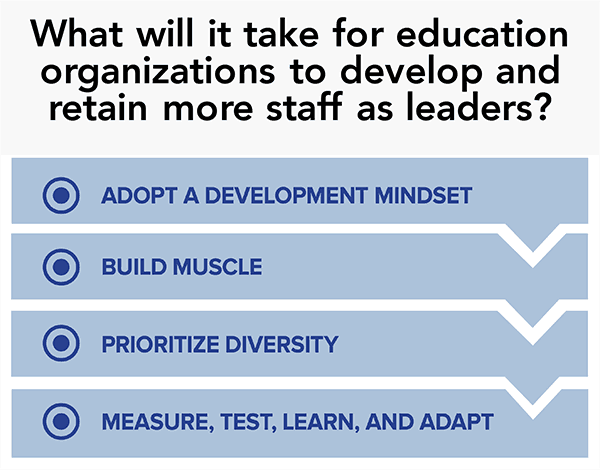New Thinking On Leadership Development: Mindsets, Investment, Diversity, and Responsiveness

Jimmy Henderson
We often hear school leaders describe how difficult it is to find qualified candidates to fill open positions. Rising stars leave too soon, and high-performing organizations are understandably hesitant to hire unless the fit is just right. There is no shortage of passionate, smart, and talented professionals in the industry. So why is it so hard to find the leaders we need to help teachers and students succeed?
This year, we set out with our partners (The Bridgespan Group, The Broad Center, Harvard Graduate School of Education, NewSchools Venture Fund, and 50CAN) to answer that question by conducting a national survey of the state of leadership development in K-12 districts, charters, and education non-profits across the country.
What did we find?
A revolving door of talent. Sixty percent of our respondents (and 70% of mid-level managers) reported plans to leave their organizations within the next three years. Meanwhile, only 23 percent would recommend their organizations as a place to build a career in education.
Under-investment in staff development. Nearly two-thirds of respondents reported not receiving adequate development support or access to coaches or mentors, and more than half said they did not have adequate budgets for professional development.
Development yields loyalty. This is where it gets interesting. Looking at respondents who would highly recommend their organizations versus those that wouldn’t, development – and not compensation – emerged as the critical differentiator, particularly when it came to leaders of color.
To address this, our report outlines a practical four-step approach for organizations to strengthen their talent practices and improve results for students.
What can we do?
Adopt a development mindset. A talent-focused culture starts at the top and should be a stated priority of every senior leadership team and Board.
Build muscle. Developing current and future leaders is a skill that can be learned, with practice and modest investment. Many tools and resources are available, including a set of K12 leadership competency maps recently launched by EdFuel.
Prioritize diversity. Students of color constitute half the public school population yet leaders of color make up less than 25 percent of senior management roles in most systems. Closing the gap will require attracting many more African American and Hispanic leaders at all levels, and then proactively providing development and opportunities to advance.
Measure, test, learn, and adapt. Leadership teams can get better over time by setting targets, tracking progress, and reflecting on results. Getting started means taking simple steps that promote learning and build a sense of momentum.
Those we interviewed were clear and unambiguous. Developing leaders that already work within your organization is a high impact practice, and it’s simply not happening enough. Further details about these findings and many more are available on our website here.
For more, check out:
- Preparing Leaders for Deeper Learning
- 10 Next Steps for EdLeaders: The Advanced Course
- EdLeaders as Lead Communicators
Jimmy Henderson is CEO of EdFuel. Follow EdFuel on Twitter, @edfuelorg.









0 Comments
Leave a Comment
Your email address will not be published. All fields are required.